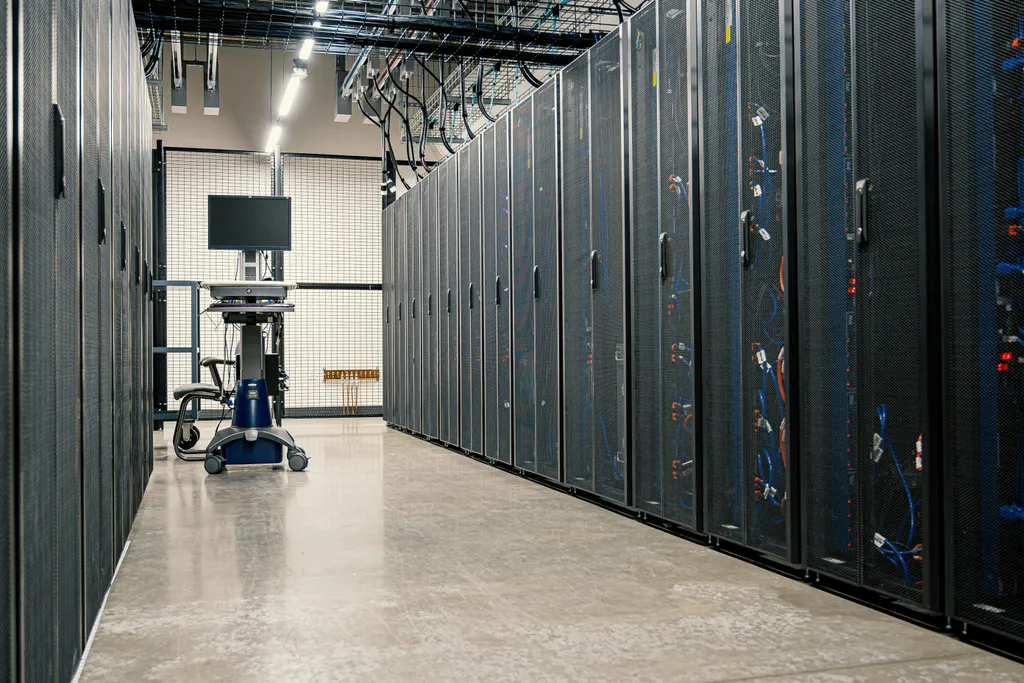 Future-Proofing Your Data Center Strategy
Future-Proofing Your Data Center Strategy
As IT infrastructure evolves, businesses must rethink their data center strategies to accommodate cloud, hybrid, and on-premise solutions. The future of data centers lies in scalability, security, automation, and cost-efficiency. With the rapid adoption of AI, edge computing, and hybrid cloud models, organizations must take a proactive approach to modernizing their infrastructure. This blog explores how companies can future-proof their data centers to ensure long-term success in an ever-changing technological landscape.
## Introduction
Data centers are the backbone of modern IT operations, housing the critical infrastructure that powers businesses worldwide. However, the traditional approach to data center management is becoming obsolete as enterprises move towards hybrid, multi-cloud, and edge computing models. The shift is driven by the need for greater agility, scalability, and efficiency while maintaining robust security and cost control.
Organizations that fail to evolve their data center strategies risk facing performance bottlenecks, security vulnerabilities, and rising operational costs. Future-proofing your data center involves strategic planning, modernization efforts, and adopting emerging technologies that can handle future IT demands.
## Benefits
A well-planned data center strategy ensures that organizations stay agile, competitive, and resilient in the face of technological disruptions. Below are some key benefits of future-proofing your data center:
### 1. Scalability & Flexibility
With the rapid growth of big data, AI workloads, and remote work, companies need data centers that scale effortlessly. Future-proofing your infrastructure ensures:
- Cloud & Hybrid Solutions: The ability to dynamically scale workloads between on-premise and cloud environments.
- Containerization & Microservices: Technologies like Kubernetes allow flexible, lightweight application deployments.
- Edge Computing Integration: Deploying resources closer to users to reduce latency and enhance real-time processing.
### 2. Cost Optimization & Energy Efficiency
Rising energy costs and environmental concerns push organizations to adopt efficient and sustainable data center models. Strategies include:
- Green Computing Initiatives: Using renewable energy sources and energy-efficient hardware.
- AI-Driven Resource Management: Automating cooling and power usage based on workload demand.
- Server Consolidation: Reducing excess hardware to minimize operational expenses.
### 3. Enhanced Security & Compliance
Cybersecurity threats continue to evolve, making it critical to fortify data centers against attacks. Future-proofing involves:
- Zero-Trust Architecture: Ensuring continuous authentication and verification for users and devices.
- AI-Powered Security: Using machine learning to detect anomalies and prevent breaches.
- Regulatory Compliance: Meeting GDPR, HIPAA, and ISO 27001 standards to avoid fines and reputational damage.
### 4. Automation & AI-Driven Management
As IT workloads grow, manual management becomes unsustainable. Automating infrastructure can:
- Reduce Downtime: AI-driven predictive maintenance helps identify failures before they occur.
- Optimize Workloads: Automated load balancing improves resource allocation.
- Self-Healing Systems: AI-powered automation restarts and reconfigures services automatically in case of failures.
## Challenges
Despite the clear benefits, modernizing a data center comes with its own set of challenges:
### 1. High Migration Costs & Complexity
Moving workloads from legacy systems to cloud and hybrid models can be expensive. Organizations must:
- Conduct cost-benefit analyses before migrating.
- Implement a phased migration strategy to reduce downtime.
- Train IT teams on cloud-native architectures.
### 2. Security Risks in a Hybrid Environment
Hybrid and multi-cloud environments introduce new security risks, such as:
- Data leakage due to misconfigured cloud settings.
- Expanded attack surface across multiple environments.
- Compliance challenges in managing data across jurisdictions.
### 3. Ensuring Business Continuity During Transition
Shifting to a modernized data center can disrupt operations if not managed carefully. To mitigate risks:
- Implement disaster recovery (DR) and backup plans.
- Use redundant architectures to minimize service interruptions.
- Test infrastructure updates in sandbox environments before deployment.
## Conclusion
A future-proof data center is more than just an IT investment—it’s a strategic advantage. By integrating scalable infrastructure, security enhancements, automation, and cost-effective energy solutions, organizations can stay ahead of technological shifts.
To remain resilient and competitive, businesses must:
- Adopt hybrid and cloud solutions for agility.
- Leverage automation and AI to improve efficiency.
- Enhance security measures to protect critical assets.
- Optimize costs with energy-efficient strategies.
The future of IT infrastructure is here—will your data center be ready? Stay tuned for more insights on IT transformation and infrastructure evolution in upcoming blogs!
 The Rise of Edge Computing – How It’s Transforming Data Centers
The Rise of Edge Computing – How It’s Transforming Data Centers
Traditional data centers are under pressure as businesses demand faster processing, lower latency, and real-time analytics. Edge computing is reshaping the landscape by decentralizing processing, reducing bandwidth costs, and enhancing system responsiveness. Understanding its impact is crucial for IT decision-makers.
## Introduction
As AI, IoT, and real-time applications become mainstream, traditional cloud data centers face scalability challenges. Edge computing offers a decentralized alternative, processing data closer to the source to reduce latency and bandwidth dependency.
## 1. What is Edge Computing?
- ✅ Decentralized processing near data sources (IoT devices, sensors, etc.).
- ✅ Reduces latency for real-time analytics and automation.
- ✅ Minimizes bandwidth costs by reducing cloud data transfers.
## 2. Why Edge Computing is Critical for Modern IT Infrastructure
- 📌 Faster Decision-Making – Critical for industries like healthcare, manufacturing, and - smart cities. -
- 📌 Lower Bandwi- dth Costs – Reduces dependency on cloud-based data transfers.
- 📌 Enhanced Security – Processes sensitive data locally rather than in the cloud.
## 3. How Edge Computing Transforms Data Centers
- ✅ Hybrid Data Center Models – Combining centralized cloud with edge nodes.
- ✅ AI & IoT Integration – Processing massive real-time data streams.
- ✅ Scalability & Reliability – Expanding capacity without latency issues.
## Conclusion
Edge computing isn’t replacing traditional data centers—it’s augmenting them. Future-ready IT infrastructures must incorporate edge architectures to ensure agility, performance, and cost efficiency.
 Why Microsoft Abandoned Its Successful Underwater Data Center Project
Why Microsoft Abandoned Its Successful Underwater Data Center Project
In a surprising move, Microsoft has decided to retire Project Natick—its ambitious, futuristic underwater data center initiative. Despite its promising performance and environmental benefits, the project will not see a commercial rollout. This post explores the history of Project Natick, its outcomes, and why Microsoft ultimately chose to move on.
## Introduction
In 2015, Microsoft launched one of the most daring infrastructure experiments in data center history: Project Natick, an underwater data center initiative designed to test whether data centers submerged in the ocean could be more sustainable, efficient, and reliable than their land-based counterparts. Eight years later, the project has officially been shelved—despite proving successful on many fronts.
So what went right—and why did Microsoft walk away?
## The History of Project Natick
Project Natick began as a response to multiple challenges:
- The rising demand for low-latency data delivery.
- Growing concerns around energy usage and sustainability in data centers.
- The desire to deploy data centers closer to coastal population hubs.
### Phase 1 (2015):
Microsoft submerged a prototype off the coast of California. This capsule operated for 105 days and proved the feasibility of submersion without disruption.
### Phase 2 (2018-2020):
A larger vessel was placed 117 feet deep off the coast of Orkney Islands, Scotland. This version contained 864 servers and 27.6 petabytes of storage and was fully powered by renewable energy from wind and tidal sources.
The capsule operated for over two years without issues, outperforming traditional data centers in terms of reliability and sustainability.
## Outcomes of the Project
Project Natick was not a failed experiment—in fact, it was a remarkable success.
### ✅ Higher Reliability
Microsoft reported that the underwater data center had one-eighth the failure rate of its land-based counterparts. The reduced exposure to human error, corrosion, and temperature fluctuation contributed to this reliability.
### ✅ Environmental Efficiency
- Powered entirely by renewable energy.
- Naturally cooled by seawater, eliminating the need for traditional HVAC systems.
- Reduced carbon footprint and energy costs.
### ✅ Modular & Rapid Deployment
- Data centers could be manufactured, shipped, and deployed within 90 days.
- Ideal for regions with limited space or infrastructure.
### ✅ Proximity to Coastal Populations
- Almost 50% of the global population lives near the coast.
- Underwater data centers could reduce latency and improve connectivity.
## So Why Did Microsoft Abandon It?
Despite its many advantages, Microsoft quietly announced it would not pursue commercial-scale underwater data centers.
Here’s why:
### ❌ Scalability Limitations
- While modular, the pods had a fixed capacity and weren’t easily upgradable or serviceable.
- Scaling would require deploying many units in marine environments, adding logistical and environmental complexity.
### ❌ Maintenance Challenges
- Physical repairs meant bringing the entire unit back to the surface.
- Long-term maintenance and lifecycle planning were not as flexible as with land-based facilities.
### ❌ Regulatory and Environmental Hurdles
- Deploying in coastal waters requires governmental and environmental permissions.
- Potential ecological concerns and jurisdictional red tape presented barriers to global rollout.
### ❌ Cloud Strategy Shift
- Microsoft is doubling down on AI, hybrid cloud, and edge computing, which favor more dynamic, accessible infrastructure.
- Underwater pods, while innovative, don’t align well with the rapid scaling needs of AI model training and inference.
## Conclusion
Project Natick may be over, but it left a lasting impact. It proved that sustainable, resilient, and low-maintenance data centers are possible—even underwater. It offered insight into how modular design, renewable power, and remote operations can shape future infrastructure.
As Microsoft pivots toward AI and global edge computing, Natick will be remembered as an inspiring leap toward sustainable cloud infrastructure. Sometimes, even the most successful pilots don’t make it to production—but their lessons carry forward.
 Future-Proofing Your Data Center Strategy
Future-Proofing Your Data Center Strategy 

